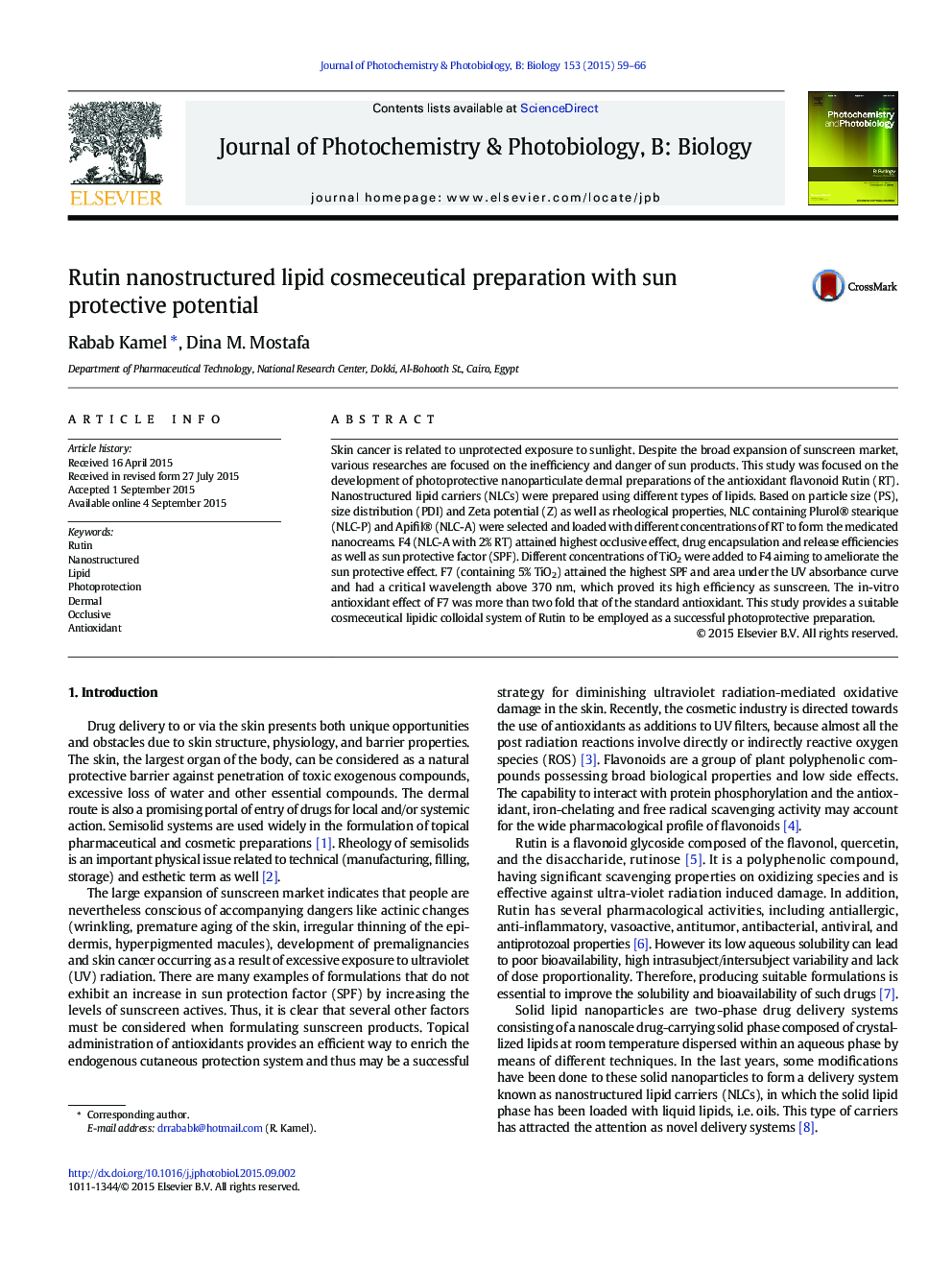| Article ID | Journal | Published Year | Pages | File Type |
|---|---|---|---|---|
| 30105 | Journal of Photochemistry and Photobiology B: Biology | 2015 | 8 Pages |
•Aim: development/evaluation of Rutin (RT) lipid nanosystem as a dermal care product•Nanostructured lipid carriers (NLCs) were successfully prepared and loaded with RT.•NLC containing Apifil® and 2% RT (F4) attained best properties.•F4 was loaded with TiO2 and effected promising antioxidant/sunscreen effects.•Selected Apifil®/TiO2 RT NLC (F7) proved to be an efficient photoprotective cream.
Skin cancer is related to unprotected exposure to sunlight. Despite the broad expansion of sunscreen market, various researches are focused on the inefficiency and danger of sun products. This study was focused on the development of photoprotective nanoparticulate dermal preparations of the antioxidant flavonoid Rutin (RT). Nanostructured lipid carriers (NLCs) were prepared using different types of lipids. Based on particle size (PS), size distribution (PDI) and Zeta potential (Z) as well as rheological properties, NLC containing Plurol® stearique (NLC-P) and Apifil® (NLC-A) were selected and loaded with different concentrations of RT to form the medicated nanocreams. F4 (NLC-A with 2% RT) attained highest occlusive effect, drug encapsulation and release efficiencies as well as sun protective factor (SPF). Different concentrations of TiO2 were added to F4 aiming to ameliorate the sun protective effect. F7 (containing 5% TiO2) attained the highest SPF and area under the UV absorbance curve and had a critical wavelength above 370 nm, which proved its high efficiency as sunscreen. The in-vitro antioxidant effect of F7 was more than two fold that of the standard antioxidant. This study provides a suitable cosmeceutical lipidic colloidal system of Rutin to be employed as a successful photoprotective preparation.
Graphical abstractFigure optionsDownload full-size imageDownload as PowerPoint slide
